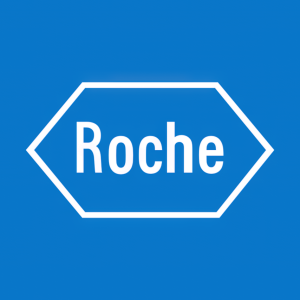New Four-year Data Show Sustained Relapse Reduction by Chugai’s Enspryng in People With Neuromyelitis Optica Spectrum Disorder (NMOSD)
Chugai Pharmaceutical announced new data showing Enspryng's long-term efficacy in preventing relapses in patients with NMOSD. Over four years, 73% of patients in the SAkuraStar study and 71% in the SAkuraSky study remained relapse-free. The safety profile remains consistent across treatment periods, with no new safety signals. Enspryng allows for self-administration, enhancing treatment accessibility. Additionally, the company is launching the SAkuraBONSAI study to further explore disease progression in treatment-naïve patients.
- 73% of patients remained relapse-free after 4 years in SAkuraStar study.
- 71% of patients remained relapse-free after 4 years in SAkuraSky study.
- Safety profile consistent with previous studies; no new safety signals.
- Enspryng allows for self-administration, improving patient accessibility.
- None.
Insights
Analyzing...
- New data demonstrate Enspryng’s robust and sustained longer-term efficacy in preventing relapses in people with NMOSD
-
More than
70% of people treated with Enspryng remained relapse-free after four years in the SAkuraStar (73% ) and SAkuraSky (71% ) open-label extension studies, reinforcing the long-term safety profile
“The data show that the efficacy and safety of Enspryng, which inhibits IL-6 signaling, are sustained over time. NMOSD is a lifelong disease where prevention of relapse is crucial, and its treatment often lasts several years. We believe that these data provide important evidence to help patients and healthcare professionals continue treatment with Enspryng with confidence,” said Dr.
The pivotal phase III SAkuraStar and SAkuraSky four year overall treatment data found that
*Relapse associated with low likelihood of recovery resulting in permanent disability
The data also reinforce that the safety profile of Enspryng in the overall Enspryng treatment period of up to seven years, is comparable to the double-blind treatment periods in both SAkuraStar and SAkuraSky studies. Rates of adverse events and serious adverse events during the overall treatment periods were consistent with Enspryng and placebo in the double-blind treatment periods. No new safety signals were observed.
About Enspryng
Enspryng, created by Chugai, is a pH-dependent binding humanized anti-IL-6 receptor antibody, which was the first product developed by applying our proprietary recycling antibody technology. The drug is designed to prevent relapse of neuromyelitis optica spectrum disorder (NMOSD) by inhibiting the cytokine IL-6 which is a key driver in NMOSD. In two global phase III clinical studies in Neuromyelitis Optica and NMOSD, the primary endpoint was achieved with satralizumab either as combination therapy with baseline immunosuppressive treatment (SAkuraSky; NCT02028884) or as monotherapy (SAkuraStar; NCT02073279). These studies represent one of the largest clinical trial programs undertaken for this rare disease. Enspryng has been approved in 58 countries including
About neuromyelitis optica spectrum disorder (NMOSD)1
NMOSD is an autoimmune disease of the central nervous system characterized by inflammatory lesions in the optic nerves and spinal cord. The disease can lead to continual and significant decrease in quality of life due to permanent neurological disability. Patients with NMOSD frequently experience a relapsing disease course with repeated attacks leading to accumulating neurological damage and disability. Symptoms may include visual impairment, motor disability, pain leading to decreased quality of life. In some cases, attacks of NMOSD can result in death. Aquaporin-4 antibodies (AQP4-IgG), pathogenic antibodies, are detected in the blood of around 70
Trademarks used or mentioned in this release are protected by law.
Sources
-
Neuromyelitis optica spectrum disorder (NMOSD) Online. https://nmosd-online.jp/ Accessed
Oct 2021 . (Japanese only) - Jarius S, Ruprecht K, Wildemann B et al. Contrasting disease patterns in seropositive and seronegative neuromyelitis optica: A multicentre study of 175 patients. J Neuroinflammation 2012;9:14.
-
Lennon
VA , Wingerchuk DM, Kryzer TJ et al. A serum autoantibody marker of neuromyelitis optica: distinction from multiple sclerosis.Lancet 2004;364:2106-12. - Marignier R, Bernard-Valnet R, Giraudon P et al. Aquaporin-4 antibody-negative neuromyelitis optica: Distinct assay sensitivity-dependent entity. Neurology 2013;80:2194-200.
- Takahashi T, Fujihara K, Nakashima I et al. Anti-aquaporin-4 antibody is involved in the pathogenesis of NMO: a study on antibody titre. Brain 2007;130:1235-43.
-
Chihara N, Aranami T, Sato W et al. Interleukin 6 signaling promotes anti-aquaporin 4 autoantibody production from plasmablasts in neuromyelitis optica.
Proc Natl Acad Sci USA 2011;108:3701-6. - Kimura A, Kishimoto T. IL-6: regulator of Treg/Th17 balance. Eur J Immunol 2010;40:1830-5.
- Lin J, Li X, Xia J. Th17 cells in neuromyelitis optica spectrum disorder: a review. Int J Neurosci2016;126:1051-60.
- Takeshita Y, Obermeier B, Cotleur AC, et al. Effects of neuromyelitis optica-IgG at the blood-brain barrier in vitro. Neurol Neuroimmunol Neuroinflamm. 2016;4(1):e311.
- Obermeier B, Daneman R, Ransohoff RM. Development, maintenance and disruption of the blood-brain barrier. Nat Med 2013;19:1584-96.
View source version on businesswire.com: https://www.businesswire.com/news/home/20211014005415/en/
For Media
Tel: +81-3-3273-0881
E-mail: pr@chugai-pharm.co.jp
For Investors
Tel: +81-3-3273-0554
E-mail: ir@chugai-pharm.co.jp
Source:







